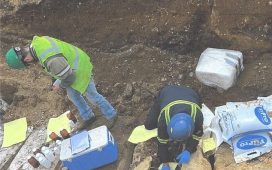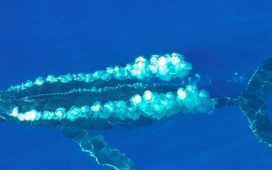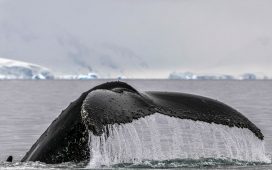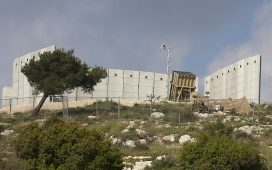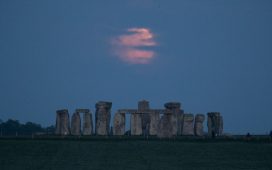
Nasa has revealed a version of the lunar lander that could one day help get astronauts to the Moon.
The space agency hopes to send its first people back to the Moon in decades – and the first woman ever – in 2024.
The newly-unveiled concept spacecraft, which it said is a “pallet lander concept” could carry a 300km rover and other payload that would allow it to explore the Moon’s polar regions.
In a technical paper explaining its work, Nasa says the mid-sized lander was designed to be simple and affordable – though it admits that the lander is not intended to survive the lunar night.
It would travel aboard a commercial launch vehicle in order to reach the moon.
1/10
The eye of Hurricane Dorian as captured by Nasa astronaut Nick Hague from onboard the International Space Station (ISS) on 3 September
Nasa/EPA
2/10
The River Nile and its delta captured at night from the ISS on 2 September
Nasa
3/10
The galaxy Messier 81, located in the northern constellation of Ursa Major, as seen by Nasa’s Spitzer Space Telescope
Nasa/JPL-Caltech
4/10
The flight path Soyuz MS-15 spacecraft is seen in this long exposure photograph as it launches from the Baikonur Cosmodrome in Kazakhstan on 25 September
Nasa/Bill Ingalls
5/10
Danielson Crater, an impact crater in the Arabia region of Mars, as captured by Nasa’s Mars Reconnaissance Orbiter spacecraft
Nasa/JPL-Caltech
6/10
A team rehearses landing and crew extraction from Boeing’s CST-100 Starliner, which will be used to carry humans to the International Space Station at the White Sands Missile Range outside Las Cruces, New Mexico
Nasa/Bill Ingalls
7/10
Bound for the International Space Station, the Soyuz MS-15 spacecraft launches from the Baikonur Cosmodrome in Kazakhstan on 25 September
Nasa/Bill Ingalls
8/10
Hurricane Dorian as seen from the ISS on 2 September
Nasa
9/10
A string of tropical cyclones streams across Earth’s northern hemisphere in this picture taken from the ISS on 4 September
Nasa
10/10
The city of New York as seen from the ISS on 11 September
Nasa
1/10
The eye of Hurricane Dorian as captured by Nasa astronaut Nick Hague from onboard the International Space Station (ISS) on 3 September
Nasa/EPA
2/10
The River Nile and its delta captured at night from the ISS on 2 September
Nasa
3/10
The galaxy Messier 81, located in the northern constellation of Ursa Major, as seen by Nasa’s Spitzer Space Telescope
Nasa/JPL-Caltech
4/10
The flight path Soyuz MS-15 spacecraft is seen in this long exposure photograph as it launches from the Baikonur Cosmodrome in Kazakhstan on 25 September
Nasa/Bill Ingalls
5/10
Danielson Crater, an impact crater in the Arabia region of Mars, as captured by Nasa’s Mars Reconnaissance Orbiter spacecraft
Nasa/JPL-Caltech
6/10
A team rehearses landing and crew extraction from Boeing’s CST-100 Starliner, which will be used to carry humans to the International Space Station at the White Sands Missile Range outside Las Cruces, New Mexico
Nasa/Bill Ingalls
7/10
Bound for the International Space Station, the Soyuz MS-15 spacecraft launches from the Baikonur Cosmodrome in Kazakhstan on 25 September
Nasa/Bill Ingalls
8/10
Hurricane Dorian as seen from the ISS on 2 September
Nasa
9/10
A string of tropical cyclones streams across Earth’s northern hemisphere in this picture taken from the ISS on 4 September
Nasa
10/10
The city of New York as seen from the ISS on 11 September
Nasa
“This lander was designed with simplicity in mind to deliver a 300 kilogram rover to a lunar pole,” said Logan Kennedy, the project’s lead systems engineer.
“We used single string systems, minimal mechanisms and existing technology to reduce complexity, though advancements in precision landing were planned to avoid hazards and to benefit rover operations.
“We keep the rover alive through transit and landing so it can go do its job.
“As robotic lunar landers grow to accommodate larger payloads, simple but high-performing landers with a contiguous payload volume will be needed.
“This concept was developed by a diverse team of people over many years and meets that need.
“We hope that other lander designers can benefit from our work.”
The move comes as the space agency races to meet an accelerated return to the moon, which US president Donald Trump’s administration has set for 2024.
Nasa wants to establish a “sustainable human presence on the moon by 2028” in a bid to discover new scientific discoveries and demonstrate new technological advancements, with the help of private companies to build a lunar economy.
Additional reporting by agencies
Social media is an increasingly important battle ground in elections – and home to many questionable claims pumped out by all sides. If social media sites won’t investigate the truth of divisive advertising, we will. Please send any political Facebook advertising you receive to digitaldemocracy@independent.co.uk, and we will catalogue and investigate it. Read more here.

